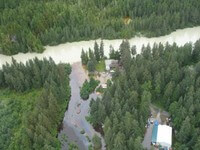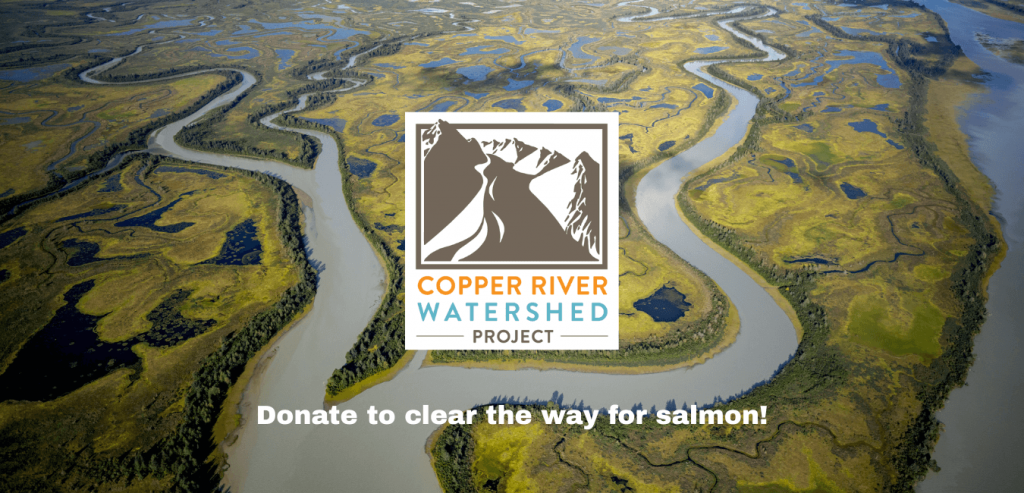
August, 2006 flood, Eyak River, Cordova (note rainbow sheen in tributary creek — is your fuel tank secure?)
Polluted runoff is now widely recognized by environmental scientists and the EPA as the single largest threat to water quality in the United States. There are twenty-three communities that dot the vast 26,500 square miles of the Copper River watershed. A watershed is an area of land that drains to the lowest point, usually a stream or bay. Small amounts of contaminants from all over the land add up to cause pollution in our water. In these communities, rainfall washes pollutants off roads, lawns, and other surfaces and carries them into the nearest body of water, and eventually into the Copper River. This runoff is called stormwater. Polluted stormwater can harm fish populations. We can all do our part not to run-off salmon!
Stormwater run-off happens during every storm event. In natural systems it helps maintain rivers and the wildlife that thrive on them, including humans. However, runoff from developed systems usually has a drastically different effect on its surroundings (see table below).
Vegetated Lands
- Trees and vegetation break the momentum of rain which helps to reduce erosion
- Streams take filtered runoff to a water body that provides habitat
- Roots anchor soil, preventing erosion
Developed Lands
- Pavement and rooftops shed water and help speed up the velocity of runoff Streams take filtered runoff to a water body that provides habitat
- Streets function as streams, channeling water into drains that dump directly into water bodies Roots anchor soil, preventing erosion
- Soil is easily washed away on construction sites or improperly revegetated sites which can contain fertilizers and other harmful pollutants
Runoff in Copper River watershed communities consists of rain and snowmelt. Runoff from roofs, driveways, sheds, and other impervious surfaces flows to the storm drain and road ditches that flow directly into our anadromous streams and lakes. Runoff from such areas, especially roads, can contain pollutants from cars, fertilizers, and other chemicals found in the developed environment. Filtering and controlling runoff is critical for protecting the subsistence, sportfish and commercial salmon economies we have in the Copper River watershed.
Stormwater Solutions
How do you prevent stormwater from reaching water bodies too quickly? Reducing the amount of impervious surface cover will greatly reduce the amount of runoff and may even slow the flow of water off a site. Water collection systems can be used to collect water off the roof to be used as bathing and washing water as well as for irrigation. Bio-swales can be used to slow and filter water before moving to streams. Vegetative buffers, and increasing the area of a site that is vegetated, can also slow and filter water.
Preventing chemicals and other hazardous materials from entering runoff is something else you can do to reduce the effects of urban runoff. You can wash your car over grass with biodegradable soap, clean up oil spills, properly dispose of paints and other chemicals, and test soils for nutrient content to ensure that over-fertilization does not occur.
Construction Site Run-off
Runoff from construction sites is problematic because not only are chemicals being washed into water bodies, but so is sediment. Sediment harms salmon by clogging and abrading their gills and smothering their eggs. Chronic sediment pollution in spawning waters can cause disruptions to our region’s fishing industry. Rain and snow-melt events can wash large amounts of sediment into neighboring water bodies, directly affecting salmon productivity.
Construction Site Solutions
To minimize erosion from stormwater runoff, land clearing should include some or all of these techniques:
1. Silt fences (labeled with contact info. in case fences need to be repaired or re-set).
2. Organic matting laid on property parcel to protect exposed, loose soils from erosion.
3. Proper equipment storage
4. Preventive methods are used to prevent oil/grease leaks and clean-up of spills occur quickly and efficiently
5. Stream crossings
6. Minimize bank trampling by constructing:
- elevated, light-penetrating boardwalks
- floating docks
- access stairways
7. Stream crossings:
- minimize number of crossings
- natural culvert bottoms
- use a bridge instead
- size culverts to handle maximum projected flows
Permits (learn more about required permits)
Often when building or disturbing soil, a permit is needed to ensure proper site drainage as well as to minimize erosion and limit the amount of toxic substances entering neighboring water bodies.
The National Pollution Discharge Elimination System (NPDES) requires all construction activities disturbing one acre of soil or more to get a permit which includes a stormwater pollution prevention plan. A Construction General Permit (CGP) is required for all soil disturbing activities of 1 acre or more.
Other Stormwater Resources
- “After the Storm” by the Environmental Protection Agency https://www.youtube.com/watch?v=mUPAPItYV_Q
- Laws regarding Stormwater National Pollutant Discharge Elimination System (NPDES) http://cfpub.epa.gov/npdes/stormwater/cgp.cfm
- Alaska Statute 16, Chapter 20 http://touchngo.com/lglcntr/akstats/Statutes/Title16/Chapter20.htm
- Center for Watershed Protecton http://www.cwp.org/Resource_Library/Controlling_Runoff_and_Discharges/index.htm
- Alaska Division of Water: Water Quality Assessment & Monitoringhttp://www.dec.state.ak.us/water/wnpspc/protection_restoration/protection_restoration_index.htm



